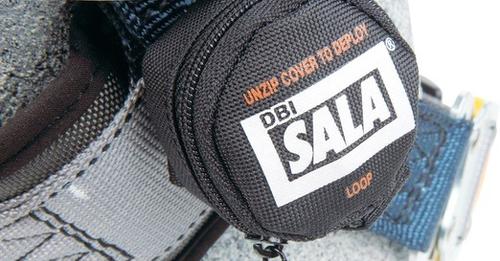 Did you know that the dangers of a fall don't stop when your harness catches you? Even if you're at no risk of falling any further thanks to your successful fall arrest system, you're still not out of danger yet. In fact, you could have as little as five minutes before death comes knocking.
Did you know that the dangers of a fall don't stop when your harness catches you? Even if you're at no risk of falling any further thanks to your successful fall arrest system, you're still not out of danger yet. In fact, you could have as little as five minutes before death comes knocking.
Suspension trauma, also known as suspension intolerance or orthostatic shock, has been reported to affect victims who are suspended within a body harness for a prolonged period of time (5 to 30 minutes).
When vertically suspended in a harness, your stationary and upright position will lead to the pooling of your blood in your legs thanks to gravity, and to the heart struggling to pump blood to vital organs - including the brain. This can lead to a loss of consciousness, which will halt all movement and exacerbate blood flow issues to deadly levels, resulting in cardiac arrest or brain damage. Think of it like how your leg can 'fall asleep' after a prolonged period of disuse, or like standing up too quickly and going faint, but much more severe.
The signs and symptoms of suspension trauma are the same to those of shock. Suspension trauma should be considered where the victim has been suspended by a harness for a prolonged period, and is exhibiting any of the following:
- faintness
- breathlessness
- sweating
- paleness
- nausea
- dizziness
- low blood pressure
- loss or 'greying' of vision
- unconsciousness
Those exhibiting symptoms can easily - and without warning - progress to later stages of suspension trauma within a few seconds, meaning that any symptom should be treated with the utmost caution. Even if someone is rescued alive in their harness after suffering from suspension trauma, they are still (potentially*) in grave danger due to the large amount of deoxygenated blood in their legs that may cause a heart attack or kidney failure when it returns to the body’s vital organs.
Although individual tolerance is variable, anybody with blood is susceptible to suspension trauma. A quick rescue and recovery is critical for survival, but what can you do to ensure your own safety?
*Research is inconclusive as to whether the return of deoxygenated blood is as dangerous as initially thought. Defer to the advice of medical professionals. This phenomenon is known as 'reflow syndrome'.
Suspension Trauma Straps:
Suspension trauma straps are designed to minimise (and hopefully prevent) the effects of suspension trauma without interfering with the efficacy of the fall-arrest system. These straps, often deployed at the waist, create loops attached to the harness which drop down below the worker and provide a surface to 'stand', placing weight on the legs and stimulating the muscles, improving blood flow.
Some harnesses also incorporate these straps into their basic design, with integrated suspension trauma straps included to protect the worker in the case of a fall. While it is possible to stimulate the muscles without these straps - through small bicycle kicks or other motions with the legs while hanging - these straps are medically proven and recommended as consistent and effective methods to delay suspension trauma.
Rescue:
While suspension trauma straps can ameliorate the issue, it is a necessity that at all times there is a plan in place for the quick retrieval and rescue of any individual suspended with a fall-arrest system. While workers should never put themselves at risk, the rescue process should be carried out (if safe and achievable) immediately, and training for such an event should be paramount for anybody organising or working with a fall-arrest system.
If on-site procedure is not sufficient, then there is a very high risk of permanent injury or death, regardless of the type of harness or the presence of suspension trauma straps. Any and all rescue procedures should include emergency services - even the quickest rescue deserves proper medical attention, so an ambulance needs to be called. It should also be noted that proper procedure is to never allow any worker to be alone while at risk of needing to be rescued.
Post-Rescue:
After the rescue, there is still room for concern, even if the worker seems lucid and in good health. As set out by the Australian Resuscitation Council, a conscious victim should be rested comfortably and monitored. Err on the side of caution at all times, and follow the instructions of any emergency response team involved. Just because a worker think that they're fine doesn't mean their body will say the same thing. Even if the patient only suffers from minor symptoms, hospitalisation is strongly recommended (at the discretion of the emergency response team).
For further details on suspension trauma, view the ProChoice blog post here





